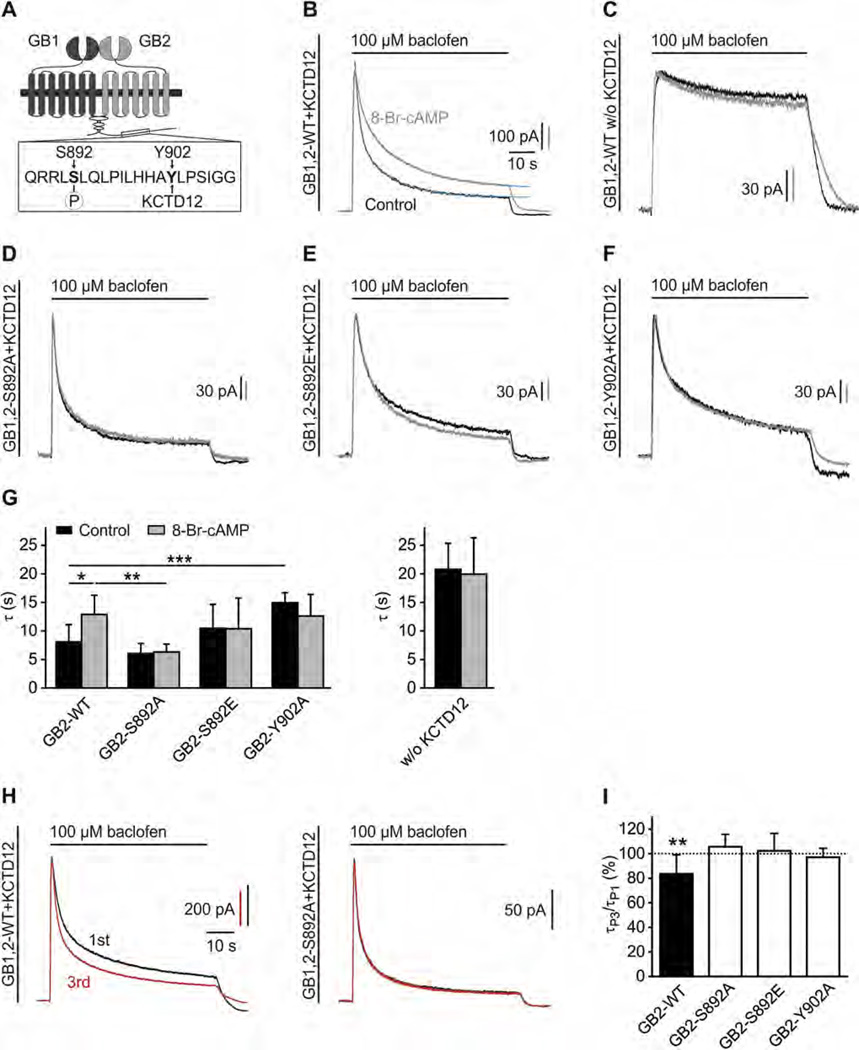Fig. 1.
S892 phosphorylation slows KCTD12-induced desensitization of baclofen-activated K+ currents. (A) Scheme highlighting the close proximity of the PKA phosphorylation-site S892 and the KCTD12 binding-site Y902 in the C-terminal domain of GB2. (B) Representative traces of GIRK currents activated by baclofen (100 µM) and recorded at −50 mV from CHO-K1 cells expressing GB2-WT, GB1b, GIRK1/2 and KCTD12. Cells were pre-incubated without (Control, black trace) or with 8-Br-cAMP(1 mM, 30 min; grey trace). The desensitization time constants τ1 and τ2 were derived from double-exponential fits (blue trace) to the decay phase of K+ currents during baclofen application. (C) Representative traces as in (B) from CHO-K1 cells lacking KCTD12. (D–F) Representative traces as in (B) from CHO-K1 cells expressing the GB2 mutants S892A (D), S892E (E) or Y902A (F). (G) Bar graph summarizing the time constant τ (amplitude-weighted mean time constant calculated from τ1 and τ2) of baclofen-induced K+ current desensitization. Data are means ± SD, n = 5–16. *,p < 0.05; **,p < 0.01; ***,p < 0.001; Sidak’s multiple comparison test. (H) Repeated activation of GIRK currents in CHO-K1 cells expressing WT GABAB receptors (GB1,2-WT) together with KCTD12 results in a sharpening of the current response (left; 1st response black, 3rd response red). No sharpening of the current response upon repeated activation is observed with mutated GABAB receptors (GB1,2-S892A) that cannot be phosphorylated at S892 (right). Baclofen applications were for 60-s in intervals of 5 min. (I) Bar graph summarizing experiments as shown in (H). In experiments with GB2-WT, the τ of the 3rd response (τP3) was significantly reduced compared to the τ of the 1st response (τP1). No change in the desensitization of the current response upon repeated activation is seen (i) when S892 cannot be phosphorylated (S892A), (ii) with the phospho-mimetic S892E and (iii) when KCTD12 cannot bind to GB2 (Y902A). Data are means ± SD, n = 7–12. **, p < 0.01; t test.

